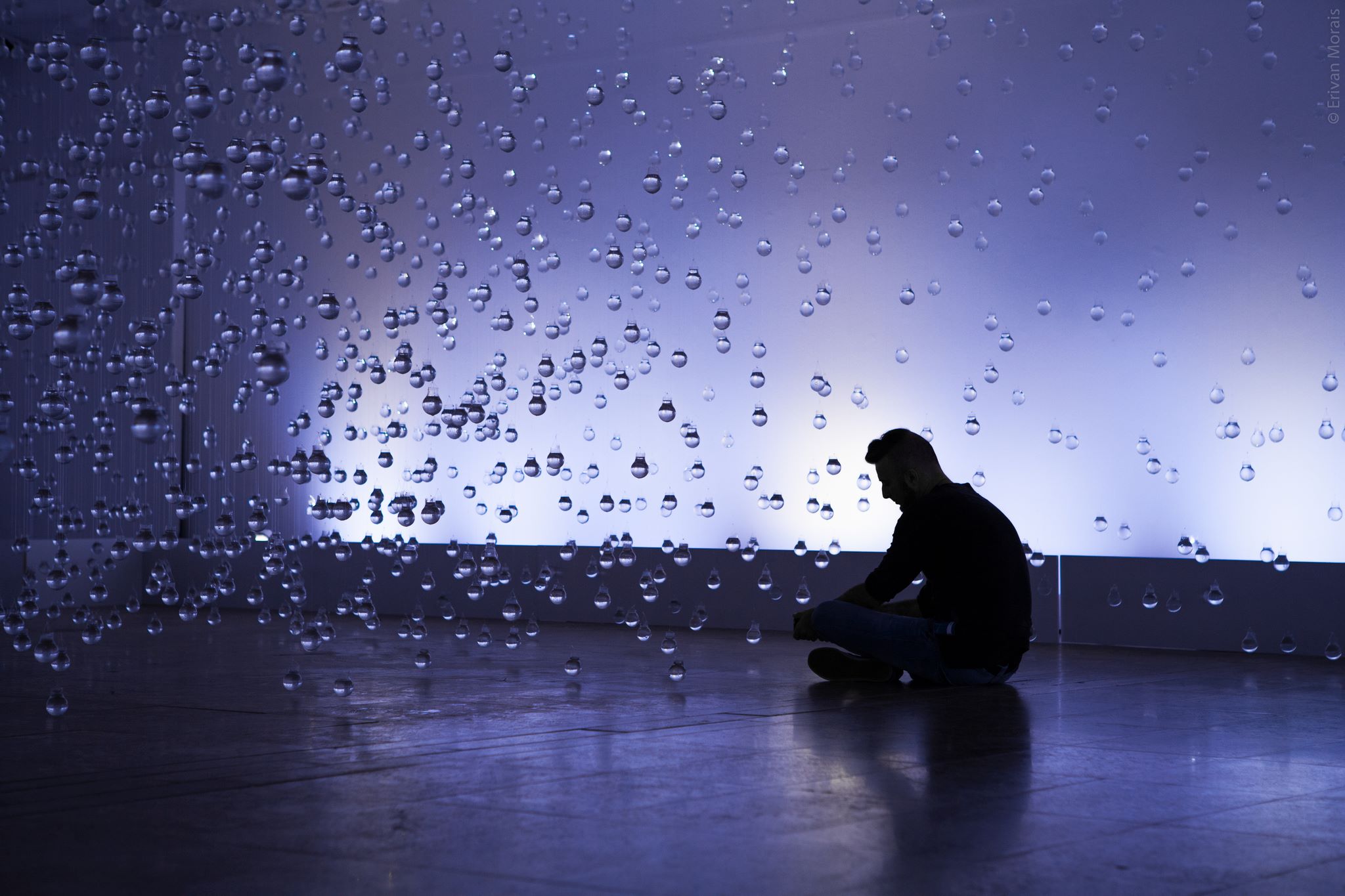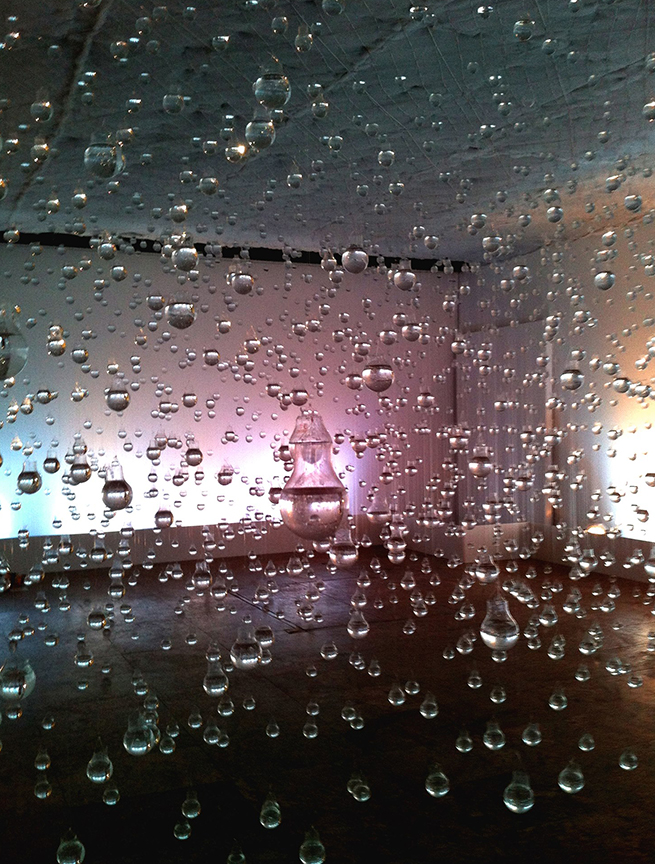Last Words: A Lenten Meditation on the Final Sayings of Christ, Week 8Sample

Do You Love Me?




The Tears of St. Peter (Lagrimas de Sao Pedro) (multiple views), Vinícius Silva de Almeida, 2005–21. Installation with six thousand light bulbs filled with water suspended by nylon threads. Various locations in Brazil. Photo: Erivan Morais Junior.
“More Love to Thee” from the album Fernando Ortega. Composed by Elizabeth Payson Prentiss. Performed by Fernando Ortega.
“Jesus, Lover of My Soul” from the album Beginnings. Composed by Charles Wesley (lyrics), Joseph Parry (music). Performed by Fernando Ortega.
Poetry:
“XI”
by Wendell Berry
Though he was ill and in pain,
in disobedience to the instruction he
would have received if he had asked,
the old man got up from his bed,
dressed, and went to the barn.
The bare branches of winter had emerged
through the last leaf-colors of fall,
the loveliest of all, browns and yellows
delicate and nameless in the gray light
and the sifting rain. He put feed
in the troughs for eighteen ewe lambs,
sent the dog for them, and she
brought them. They came eager
to their feed, and he who felt
their hunger was by their feeding
eased. From no place in the time
of present places, within no boundary
nameable in human thought,
they had gathered once again,
the shepherd, his sheep, and his dog
with all the known and the unknown
round about to the heavens’ limit.
Was this his stubbornness or bravado?
No. Only an ordinary act
of profoundest intimacy in a day
that might have been better. Still
the world persisted in its beauty,
he in his gratitude, and for this
he had most earnestly prayed.
DO YOU LOVE ME?: THE TEARS OF PETER
Brazilian artist Vinicius Silva de Almeida’s work, Lagrimas de Sao Pedro (The Tears of Saint Peter) is an installation constructed from 6,000 lightbulbs filled with water and hung from strings of nylon. It seems like this work embodies both sorrow and hope. The lightbulbs have a weight to them, they hang from nylon thread, and hung at different levels, the space is filled with tears as physical objects. The work may also give the impression of rain, and the droplets when caught by light, refract, glisten, and dance.
Perhaps the invitation here is to feel how Peter felt that night when he denied three times that he was one of Jesus’ disciples. Peter wept bitterly when he remembered that the Lord had told him, “Before the rooster crows tomorrow morning, you will deny me three times” (Luke 22:61). Perhaps the invitation is also to experience healing. In a commentary on this work in The Visual Commentary on Scripture, Clemena Antonova writes that viewers of Lagrimas de Sao Pedro may consider “the interconnection of sorrow and healing in Peter’s story.” I know for me personally; tears have been and continue to be a part of the healing process. I have experienced much loss the past couple of years, and tears often well up in my eyes.
In today’s passage, Jesus is once again speaking with Peter. Only this time, he is asking Peter if he loves him. This passage in John 21 does not directly mention tears, but it does say that Peter was grieved after the third time Jesus asked him if he loved him. Peter replies, “Lord, you know everything. You know that I love you.” “Then feed my sheep,” Jesus says.
My Dad had sheep. The last time I visited my Dad on his farm before he passed away, there was a Sunday afternoon that he laced up his boots, I put mine on, and we walked outside together on a chilly March afternoon to the barn to care for the sheep. It was the first day of Daylight Savings, and I recall my Dad saying how he liked having the longer days. I remember walking behind my Dad and looking at him. Looking at him as my Dad, and also as an aged ill man still doing what he loved—tending to his sheep.
One line from Wendell Berry’s poem especially struck me. “They came eager to their feed, and he who felt their hunger was by their feeding eased.” I wonder if it eased my Dad to feed his sheep? It was not only out of responsibility that he cared for them, but out of love and joy they brought him. I wonder too if when Jesus told Peter to feed his sheep, it was more than a command for Peter to care for other believers, but I wonder if it was also a personal invitation for Peter to receive Christ’s love. That in feeding Jesus’ sheep, Peter would know more deeply how he was forgiven, loved, and cared for.
As we are now in the first week of Eastertide, we have walked through Lent, entered into Holy Week, and celebrated Christ’s Resurrection. We declare together, He is Risen! In this season of Eastertide, may we welcome the tears and also experience healing. May we acknowledge the grief and anticipate newness with hope. May we serve and love others and receive Christ’s love personally, living out ordinary acts as moments of gratitude, beauty, and grace.
Kari Dunham, M.F.A.
Adjunct Professor of Art
Biola University
Scripture
About this Plan

The Lent Project is an initiative of Biola University's Center for Christianity, Culture and the Arts. Each daily devotion includes a portion of Scripture, a devotional, a prayer, a work of visual art or a video, a piece of music, and a poem plus brief commentaries on the artworks and artists. The Seven Last Words of Christ refers to the seven short phrases uttered by Jesus on the cross, as gathered from the four Christian gospels. This devotional project connects word, image, voice and song into daily meditations on these words.
More
We would like to thank Biola University for providing this plan. For more information, please visit: https://ccca.biola.edu/lent/2025
Related Plans

Acts 20 | Encouragement in Goodbyes

When God Is Silent: Finding Faith in the Waiting

Provision

Time

The Spiritual Significance of KEYS in the Bible

Two-Year Chronological Bible Reading Plan (First Year-August)

Spiritual Training: The Discipline of Fasting and Solitude

Wisdom: A Weapon of War

Relentless Love: Reflections on the Book of Jonah
